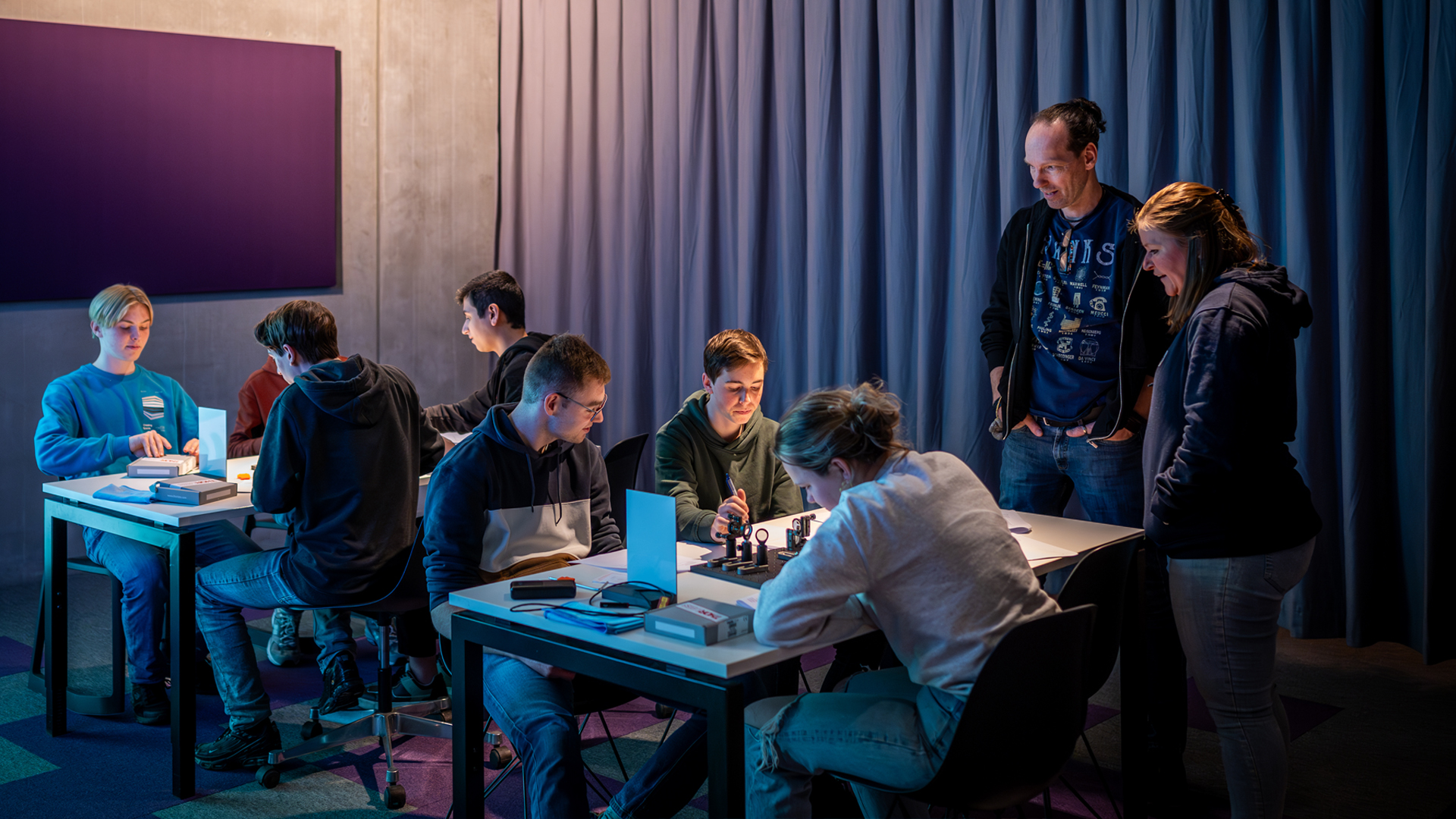
Interactive learning, conducting research themselves and sharing experiences is what is on offer for students that take part in the programme at the Einstein Telescope Education Centre (ETEC). They will learn about gravitational waves and the Einstein Telescope and get a taste of working together on a complex project and sharing the findings.
The Einstein Telescope will be one, large observatory to measure gravitational waves. The southern part of the province of Limburg is one of the possible locations for the telescope.
If this region is selected for the Einstein Telescope, the decision will have a considerable and positive impact locally and nationally. Scientists and engineers have already started work on the development of this enormous telescope. One of the facilities where this work is carried out is located in Maastricht ETpathfinder.
A scientific project of these dimensions is not only of interest to the people working on it, but also to secondary school students and anybody else interested in it. As the renowned scientific museum in the south of the Netherlands, Discovery Museum has set up the Einstein Telescope Education Centre (ETEC) to show students that the research conducted for the Einstein Telescope has a bearing on what they learn at school. They will learn that parts of physics courses at secondary school level are applied to the research conducted for this challenging project.
ETEC aims at introducing students to the Einstein Telescope and letting them act as researchers. They will experience what it is like to work as members of a team to solve technical problems that are related to physics. For one day they follow in the footsteps of scientists.
ETEC also aims to kindle an interest in students for science and engineering so that they may opt for a career in one of these disciplines. Who knows, they may become the future researchers that work with the Einstein Telescope…
The Einstein Telescope Education Centre is a programme for secondary schools and focuses primarily on students of general education in their final year and students of pre-university education close to graduation. Groups of students can take part in a day-long programme together with their teachers. ETEC can accommodate one group (with a maximum of 40 students) on a day-to-day basis and a maximum capacity of 1,000 students annually.
For further information or bookings you can contact us at etec@discoverymuseum.nl or call us on +31(0)45-567 60 50. You can reach us from Tuesday until Friday during office hours.
Information for teachers
Before taking part in the programme teachers will be provided with information to prepare the students for their visit to the Einstein Telescope Education Centre. During the day teachers may take part in the students’ activities or decide to watch their efforts. ETEC staff will be on hand to offer support during the workshops.
Teachers are asked to refresh their own knowledge and/or that of their students prior attending the ETEC programme. The Maastricht Bètasteunpunt, science support centre, can provide teachers with a series of interesting videos and tutorials that can be watched here. This material is based on Newton’s laws and offers exciting insights into the theory of relativity which mostly remain unexplored in the conventional formats. The material is suitable for use as part of the pre-university curriculum.